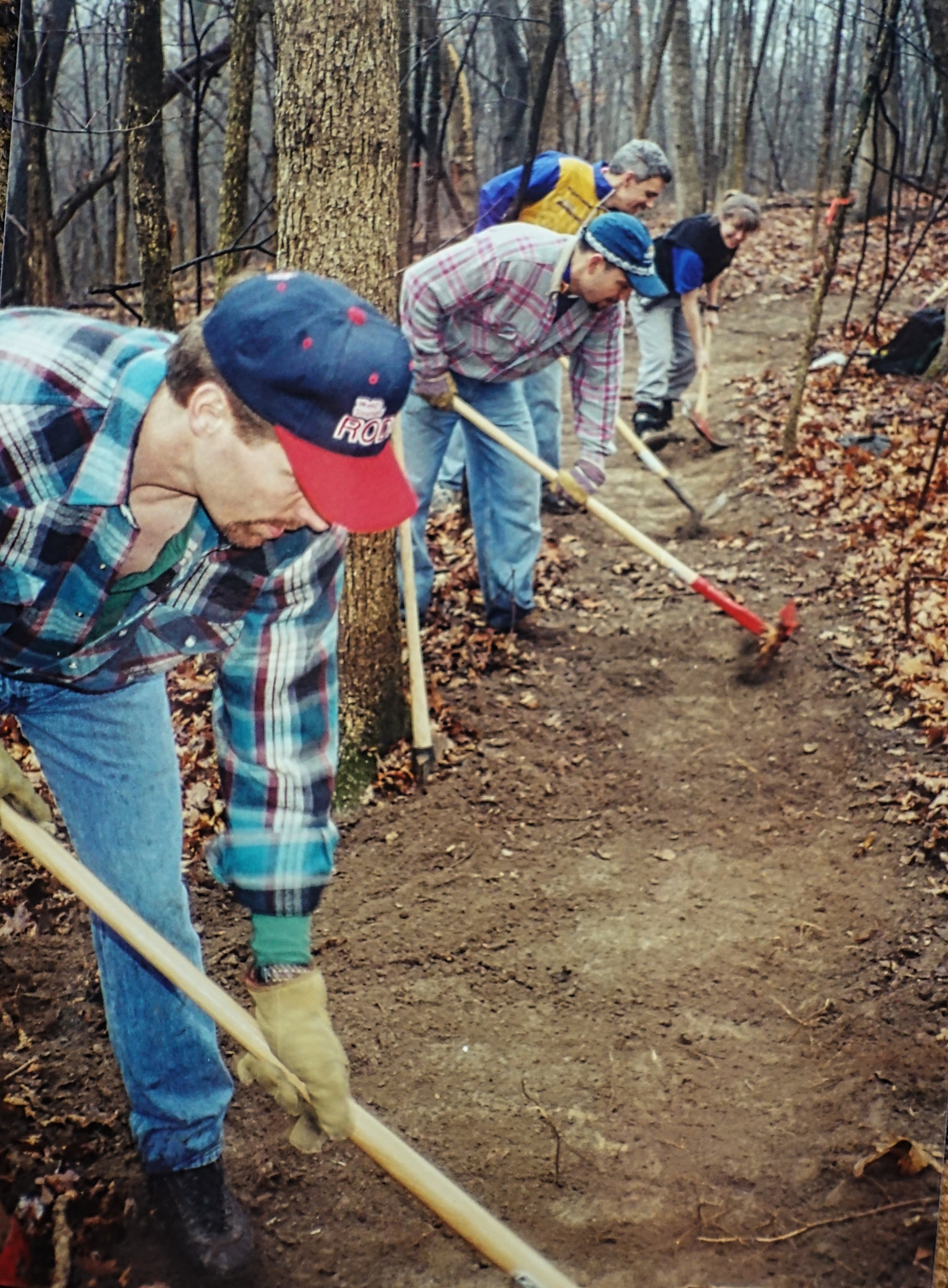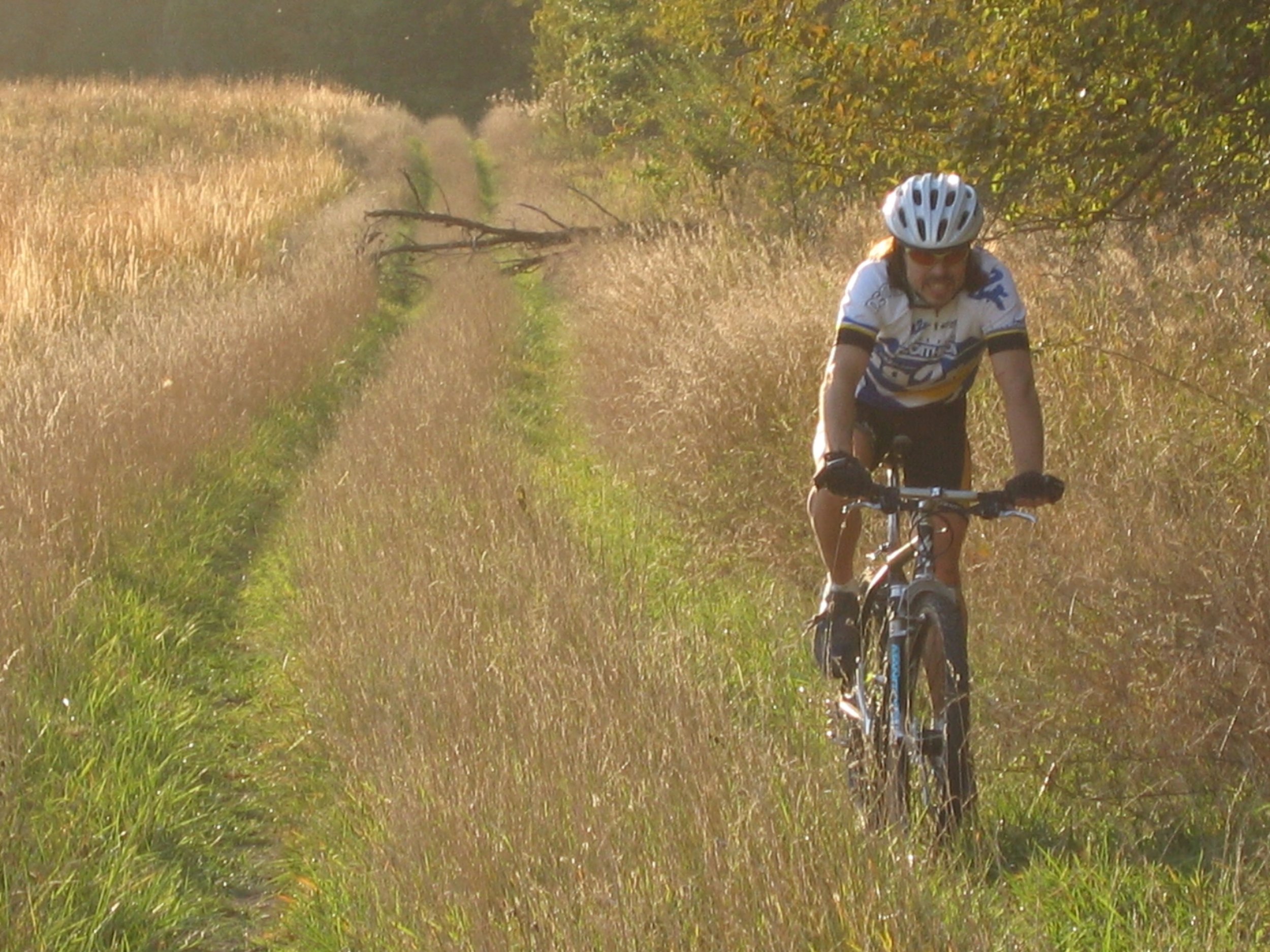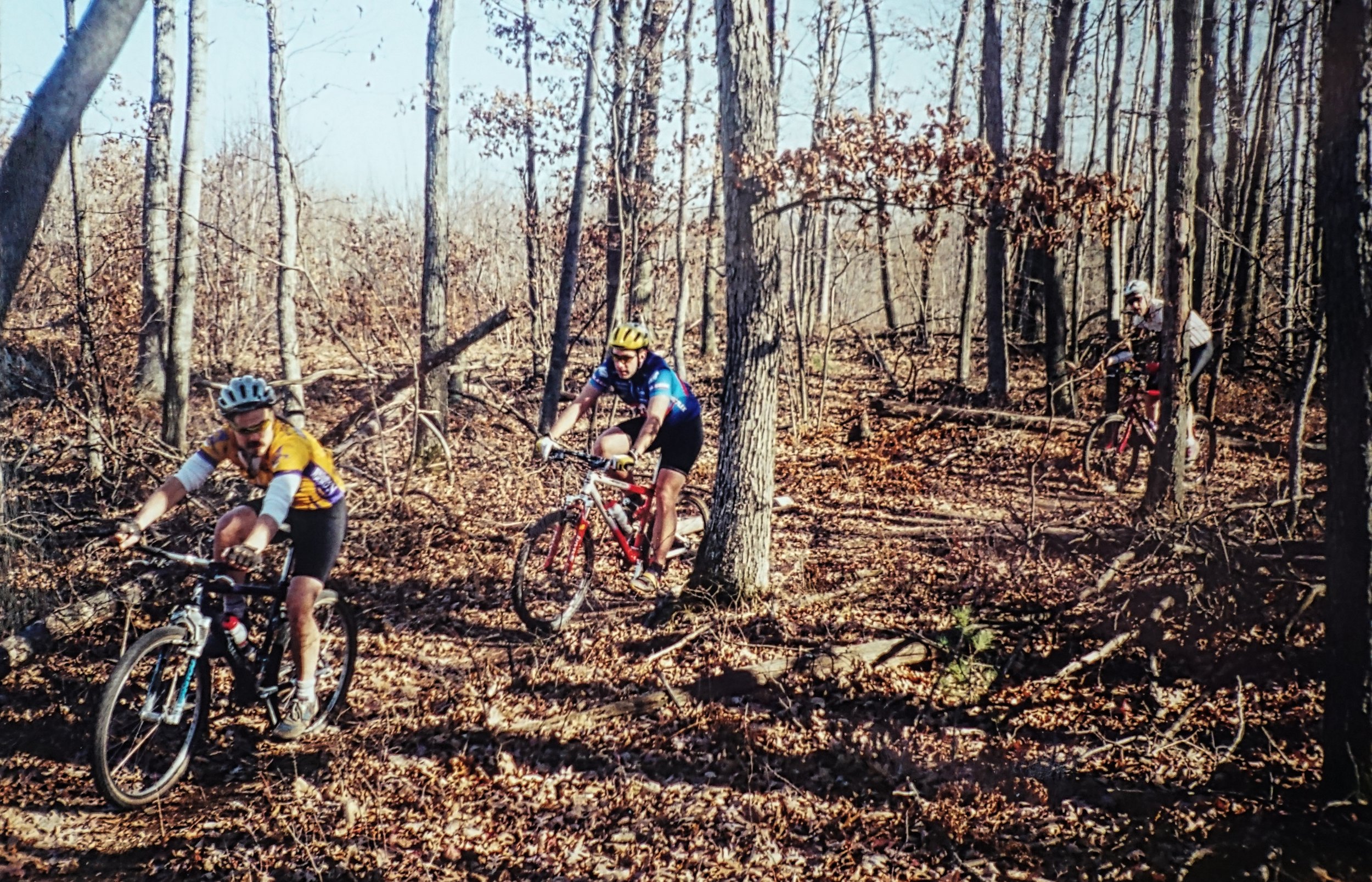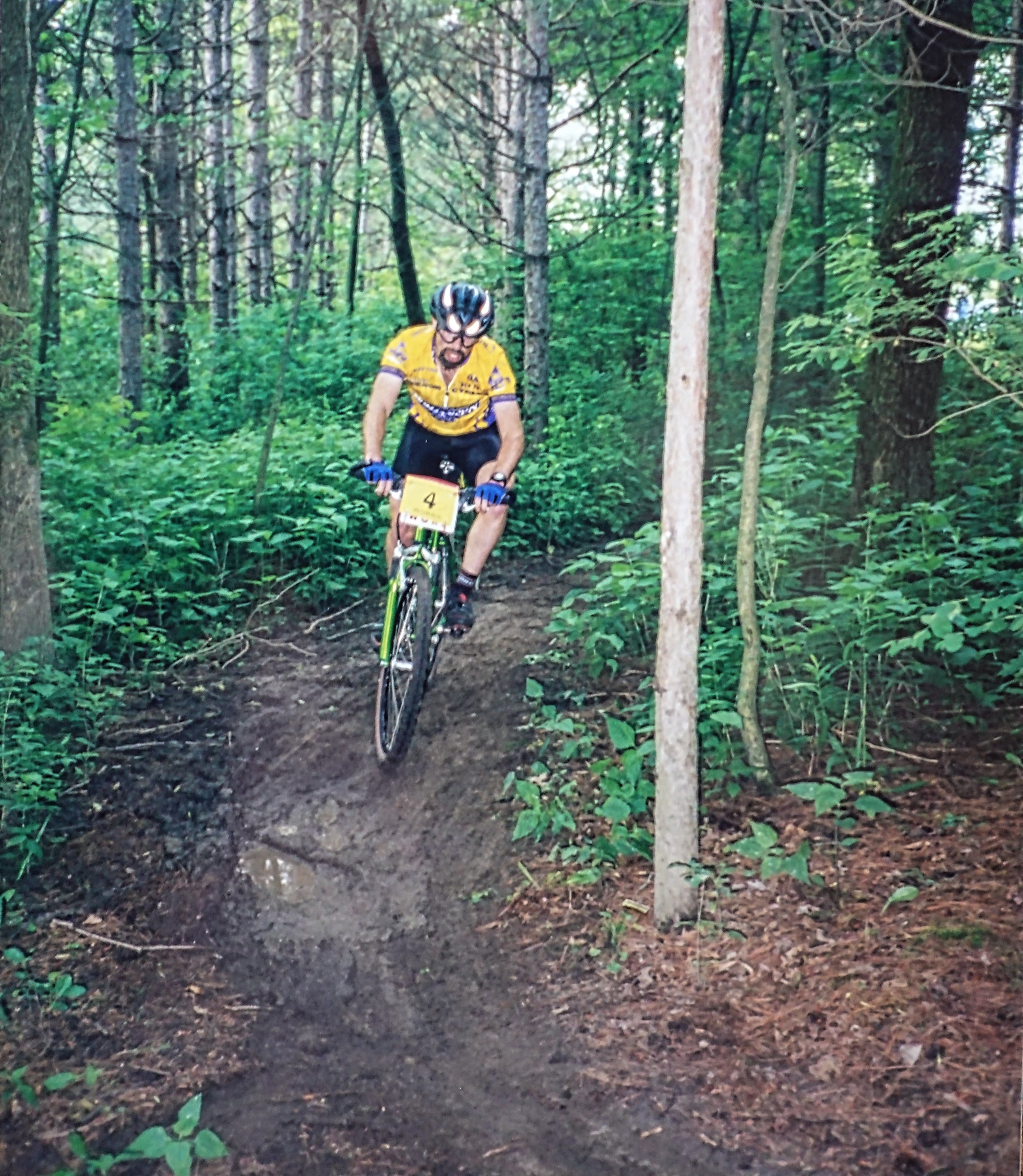How Dirt, Grit, and a Whole Lot of Heart Built Wisconsin’s Trails
The Evolution of CORP Trails—from rogue rides to responsible, quality singletrack
Back in the ‘90s, if you wanted to ride mountain bikes in Wisconsin, you didn’t ask for permission—you just grabbed a rake, followed a deer path, and hoped no one posted a “No Bikes” sign the next day.
Fast forward to today, and you’ll find more than 76 miles of purpose-built, rideable year-round singletrack managed by CORP Trails across 20 locations in south-central Wisconsin. Those trails didn’t appear overnight—they’re the product of decades of evolution, experimentation, and passion.
Let’s rewind and see how it all happened.
(L-R) David Reddington, Jason Polanski, David Bell, from the Chain Smokers Mountain Bike Team finish trail tread under the direction of Rita Nigren. The Farm, 1998. Now known as Area 25.5.
The DIY Days: Guts Before Guidelines (1990s–Early 2000s)
Mountain biking exploded onto the global stage in the early ’90s—World Championships in 1990, Olympic debut in 1996—but here in Wisconsin, things looked a little different.
Few trail systems welcomed mountain bikes. Flow trails hadn’t been conceived. There were no berms. Just hikers and equestrians giving you the stink eye while you tried to sneak in a few miles on a ski trail in August.
We didn’t have permissions; we had persistence. Most trails were “rake and rides”—hand-scratched loops hidden in ravines and forgotten woodlots. Riders used what they had: game trails, logging roads, and an unshakable need to explore. Some trails disappeared overnight with a land sale or a new sign. Others survived on handshake deals, duct tape diplomacy, and luck.
At places like Blue Mound State Park, Kettle Moraine State Forest, and the Chequamegon National Forest, the idea of bike-optimized trails was just beginning. Blackhawk Ski Club was ahead of the pack— allowing mountain bikers to build their own trails around 1995.
Trail builders were passionate; their knowledge was evolving. Water bars and rubber mats passed as erosion control. It wasn’t sustainable—that concept would take another 20 years to arrive—but it was a start.
Every ride in the 1990s was an adventure that started with finding a place to ride, navigating the trail, portaging around downed trees and squeezing under closed gates. Jay Herman mows some double-track; Johnson County, IA, 1999.
2000–2010: Organization Over Chaos
As mountain biking boomed, so did trail conflict—and that’s when the trail community got serious.
Groups like WORBA (Wisconsin Off-Road Bicycle Association)—the precursor to CORP Trails—started working with the DNR, Dane County parks and municipalities. In the Northwoods, CAMBA convinced the Chequamegon National Forest to officially open trails. People started showing up for workdays. Tools got better. Conversations with landowners turned professional and agreements got documented. Workshops popped up to teach water management, bench cutting, and sustainable design.
What started with a rake turned into a relationship—with the land, with each other, and with the future.
2010–Now: Trails Meet Technology (and Community Muscle)
Today, trail building is a science and an art.
Trail designers use GPS, soil data, and sustainable construction practices to build trails that are fun and durable. Machine-built flow trails have joined hand-cut classics. Professional trail builders are now part of the equation—but volunteers are still the soul.
Building trails is no longer a backwoods hobby—it’s a costly per-mile investment. CORP Trails partners with land managers, applies for grants, raises funds, and recruits community sponsors to make projects happen. And they don’t just build—they maintain, improve, and expand.
Our trail stewards are part construction crew, part event planner, part conservationist. And our volunteers? Still the most passionate crew you’ll ever meet—digging, shaping, and sometimes seeing who can carry the biggest rock.
Logging activity was close at hand but bermed bike trails were decades away. Jay Herman, Lee Unwin and Craig Shankwitz try to find a trail under the leaves. Levis Trow, 1998.
The Future: More Trails. More Riders. More Stoke.
The future of trail building in Wisconsin is bright. And busy.
With e-bikes, adaptive riders, and NICA teams joining the scene, the demand for trails that are accessible, sustainable, and progressive is exploding. New trail systems need space for everyone—from first-timers to full-send riders.
CORP Trails, along with other local orgs like Metro Mountain Bikers and CAMBA, are leading the way. And it’s going to take all of us—digging, donating, and dreaming—to keep up.
Racing the Wednesday night time trial through wet spots at one of the few local places officially open to mountain biking. Ben Neff picks a line at Blackhawk Ski Club, 1997.
Your Ride Is Built on Volunteer Passion
Next time you’re flying down Cliff Edge or climbing Holy Schist, remember: Someone sweated for that line. A crew of unpaid volunteers moved dirt, rerouted drainage, or raised funds and made it happen—for the love of the ride.
Want to give back? Join a workday. Donate a few bucks. Bring post-dig beers. Or just say “thanks” when you see a volunteer on the trail.
Because in the end, trails don’t build themselves. We build them—together.




